Lancehead
Appearance
The most common species within the Pantanal is the Jacaraca-pintada (spotted jararaca) or Bothrops neuwiedi matogrossensis. Their grey-brown colour and spotted appearance provides excellent camouflage. It has dark dorsal patches are edged in white, with a white or yellow belly having grey speckling. Adults are typically around 70 cm in length but can grow up to one metre. This species has a longer tail than most other Lanceheads, which may be an adaptation for climbing into vegetation during the Pantanal's seasonal floods.
Jararaca-pintada (bothrops neudwiedi) is the species of lancehead most frequently encountered in the Pantanal. It's typically around 70 cm in length and has a dark spotted coloration providing excellent camouflage. Photo: Daderot/Wikimedia.
The Jararaçu (bothrops jararacussu) is another lancehead species also found in the Pantanal. This species is slightly bigger, with adults reaching 1.5 metres. It has a lighter grey colour and more distinct patterning. Photo: Luis Roberto Francisco/Wikimedia.
The Jararaçu is a related species. This has a lighter grey coloration, with more distinct patterning. This is also larger - growing up to 1.5 metres in length.
Behaviour and Habitat
Lanceheads are irritable and quick to strike when threatened or disturbed. When this occurs they dart quickly towards the cause of the disturbance - sometimes lifting their whole body off the ground in the process. Although, they inhabit grasslands, woodlands and agricultural areas, they occasionally also inhabit human structures such as barns and simple rural houses offering a food source of mice and other small rodents.
Aside from small rodents, lanceheads eat amphibians, such as toads and frogs, plus other reptiles such as lizards. Lanceheads are nocturnal in nature - coming out at night to hunt, which is when their heat sensors give them the best advantage.
Some birds prey on small lanceheads, swooping down and pouncing on them - then grabbing their head before they have a chance to strike. Adult or near-adult lanceheads are preyed on by another snake species called the Mussurana (clelia clelia). This is plain black snake which is immune to lancehead venom. It produces a mild venom of its own but typically kills the lanceheads through constriction - then ingests them. Fortunately the Mussurana poses no threat to humans and are sometimes kept as pets by farmers and plantation workers because of their role reducing the threat of lanceheads.
Scientific Name
Bothrops jararaca
Bothrops neuwiedi

Local Name
Jararaca
Jararaca-pintada

Description
Medium size snake, 60 cm to 1.5 m depending on species. Variety of of colours although most Pantanal species have a grey or brown mottled appearance. Large triangular head.
For most Brazilians, the jararaca (also known as the Brazilian Lancehead, bothrops moojeni) is light brown in colour. However, this particular species is less common within the Pantanal. Photo: Fernando Tatagiba/Wikimedia.
Venom and Bites
Although Lancehead venom mightn't be as strong as other species, such as the cascavel, its still something to be taken seriously. Bites cause significant pain and nausea - with massive swelling and sometimes necrosis (dying cells which turn black and atrophy) around the bite area. Without timely treatment, the mortality rate is less than 10% - but can leave significant scarring and kidney problems. With treatment, the mortality is reduced to around 0.5%.
A notable factor of the venom is that it contains an inhibiter substance that triggers a massive drop in blood pressure. The resulting identification and isolation of this substance provided the basis for several medications now widely used in the treatment of hypertension.
Reproduction
As per other South American vipers, lance heads are ovoviviparous, giving birth to live young. This occurs in the months October-December, at the beginning of the wet season. The typical clutch size varies from 18 to 40 young. The young snakes are independent and able to hunt their own prey - using the yellowish light-coloured tail as a lure for small frogs and toads.
Precautions
Although your chances of encountering one are very low, Lanceheads are still the snake presenting the greatest risk for Pantanal visitors. The following tips will help you reduce your risk
- Take care (and a flashlight) when wandering through the Pantanal - especially at night if you're on a camping tour and headed to the bathroom.
- Take care if climbing roadside observation platforms in the late afternoon or evening. These are popular basking areas holding the last heat of the day.
- Although sandals are a popular choice for Pantanal treks going through water, boots are a better bet when walking through the grasslands and woodland - especially at night.
- Be careful if trekking through heavy bush and scrublands. Take extreme care around dead and hollow logs. Don't stick your hands in rock crevices or pick flowers or other plants without first investigating the area around them for a sleeping snake.
- Don't place sleeping bag(s) next to bush, tall grass, large boulders or trees where snakes are known to live and nest. Your camp site and tents should be located in a cleared area. Tents and mosquito netting should remain zipped closed whenever practical.
- Don't try to pick up or handle snakes unless you have formal training and are able to handle them efficiently.
Quick Facts
- Bait gatherers who scour the surfaces of ponds and shallow marshes looking for small bait fish for sale to fishermen often encounter lanceheads in grasses along the banks - and occasionally get bitten.
- Horses are another frequent victim when grazing near ponds. Horses are often curious - sniffing the snakes and poking them with their snouts. This behaviour can ultimately prove fatal for the horse.



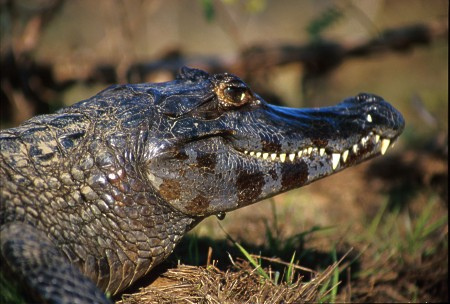
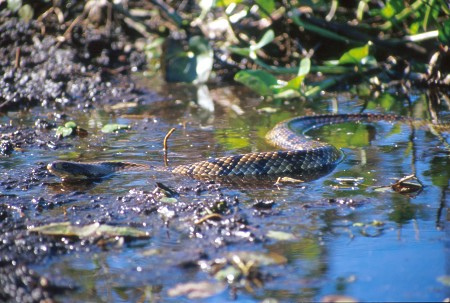
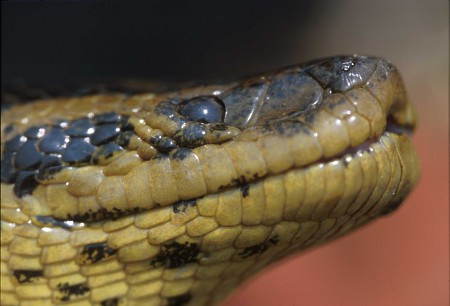


Banner image: Brazilian Lancehead (Shutterstock/reptiles4all).
Footer images: Jacaré; Anaconda; False Water Cobra (Andrew Mercer)
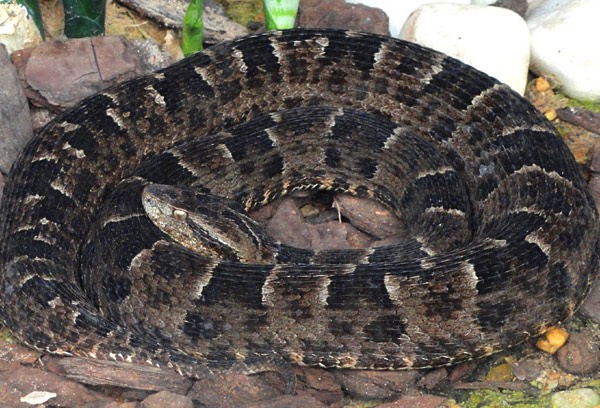
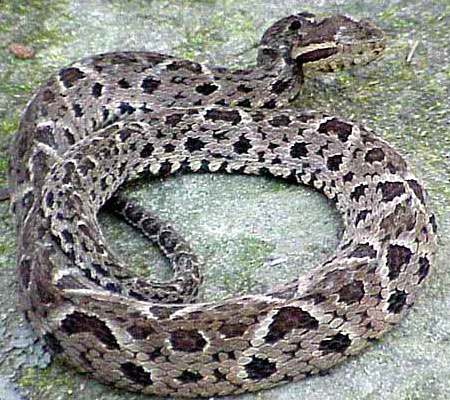
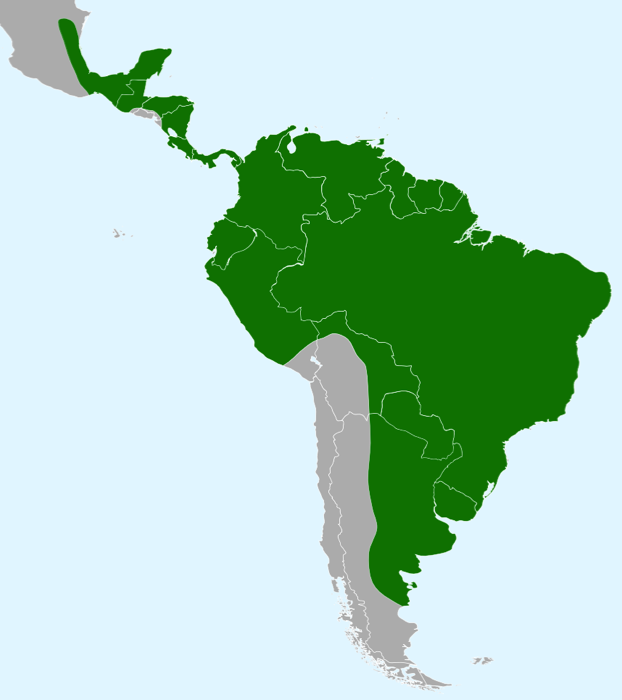
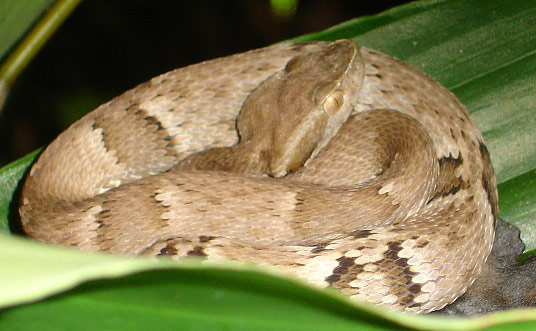
Pantanal Escapes